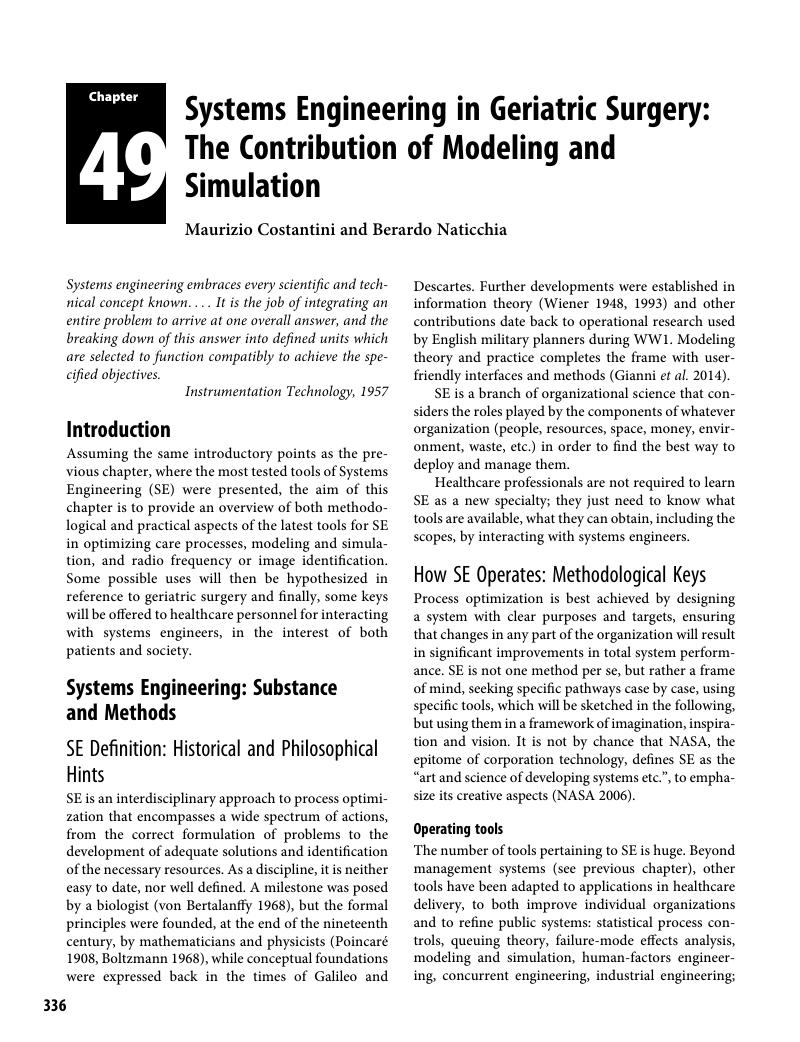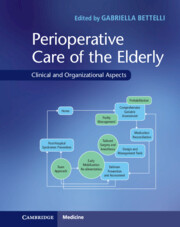Book contents
- Perioperative Care of the Elderly
- Perioperative Care of the Elderly
- Copyright page
- Contents
- Contributors
- Forewords
- Preface
- Introduction: Population Aging, Healthcare Systems and Surgery
- Section 1 Preoperative Evaluation
- Section 2 Preparation for Surgery
- Section 3 Intraoperative Management
- Section 4 Postoperative Management
- Section 5 Key Issues for Optimal Organization
- Chapter 45 Models of Care and Organizational Solutions for Geriatric Surgery
- Chapter 46 Hospital Design for the Elderly Surgical Patient
- Chapter 47 Patient Safety, Ergonomics and Clinical Risk Management
- Chapter 48 Systemic Approach to Management in Geriatric Surgery: Methods and Tools
- Chapter 49 Systems Engineering in Geriatric Surgery: The Contribution of Modeling and Simulation
- Chapter 50 Closing the Loop: How the Elderly Live the Experience of Surgery
- Index
- References
Chapter 49 - Systems Engineering in Geriatric Surgery: The Contribution of Modeling and Simulation
from Section 5 - Key Issues for Optimal Organization
Published online by Cambridge University Press: 16 November 2017
- Perioperative Care of the Elderly
- Perioperative Care of the Elderly
- Copyright page
- Contents
- Contributors
- Forewords
- Preface
- Introduction: Population Aging, Healthcare Systems and Surgery
- Section 1 Preoperative Evaluation
- Section 2 Preparation for Surgery
- Section 3 Intraoperative Management
- Section 4 Postoperative Management
- Section 5 Key Issues for Optimal Organization
- Chapter 45 Models of Care and Organizational Solutions for Geriatric Surgery
- Chapter 46 Hospital Design for the Elderly Surgical Patient
- Chapter 47 Patient Safety, Ergonomics and Clinical Risk Management
- Chapter 48 Systemic Approach to Management in Geriatric Surgery: Methods and Tools
- Chapter 49 Systems Engineering in Geriatric Surgery: The Contribution of Modeling and Simulation
- Chapter 50 Closing the Loop: How the Elderly Live the Experience of Surgery
- Index
- References
Summary

- Type
- Chapter
- Information
- Perioperative Care of the ElderlyClinical and Organizational Aspects, pp. 336 - 341Publisher: Cambridge University PressPrint publication year: 2017



